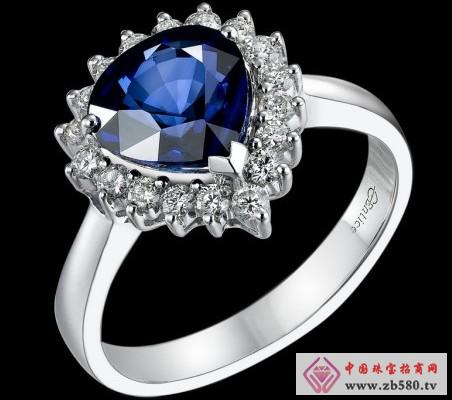As a rare and rare gemstone that is second only to diamonds, the standard for measuring sapphire is usually based on 1T, 1P and 4C: Transparency, Producing Area, Colour, Clarity, Cut. (Cut), carat weight (Carat)

1. Transparency
When sapphire is identified by the naked eye, the transparency is generally divided into five levels: transparent, translucent, translucent, translucent, and opaque. Generally, the more transparent and clean the jewel, the higher the quality and value.
2. Producing area (Producingarea)
The quality of collection-grade gemstones from India, Kashmir, Myanmar, Sri Lanka and other places is very rare and precious. Such gemstones often require identification or certification from the authoritative laboratory.
The world's most famous sapphire origin is in Kashmir, Myanmar, Sri Lanka, Thailand, Australia, China and other places. Among them, the sapphire produced by Kashmir, Myanmar, and Sri Lanka has many high quality and high value, so merchants like to name their sapphire in these three places to increase their value. However, the sapphire produced by these three producing areas is not of excellent quality, and other sapphire is also found in other places of origin. Therefore, although the sapphire variety is sometimes named after the commercial place, the place of origin has lost its geographical significance, but A sapphire that represents certain characteristics and grades.
1. Kashmir Sapphire: A translucent cornflower blue (purple blue) velvety sapphire that has been mined for more than 100 years. Authentic Kashmir sapphire has many factors affecting mining due to its topography and climate, so the output is low. In recent years, there is a lack of quality products, but there are still a few high-quality products on the market. A small number of “Kashmiri sapphires†are sometimes available in Myanmar and Thailand. In recent years, in the United States, Montana, Australia and other places have such brilliant sapphire output. 2. Burmese sapphire: Very high quality dark blue or bluish gems, with some colors removed and some black appearing under artificial light. Kashmiri sapphire does not have this black feature.
3. Thai sapphire: very dark blue sapphire, blue-black in the sun (American gem market); or deeper blue and slightly velve-like gem (the British gem market) than the Kashmir sapphire. In the United States, this sapphire is also of a lower grade.
4. Sri Lanka sapphire: sapphire blue to light blue-violet, with a brilliant sapphire; when a large number of needle-like, floc-like inclusions, the brilliance is reduced, slightly gray. The color is often uneven (such as ribbons, stripes, etc.). Sri Lanka has produced high-quality sapphires in history, which is enduring and is of good quality (a few are best).
5. Australian sapphire: Australian, Thai and other real estate sapphire, black blue to blue black, poor transparency (translucent to opaque), often with an undesired green tone. Australian sapphires often have ribbons and feathers. The sapphire produced in the Changle area of ​​Shandong Province is similar to this sapphire. At home, there is no special classification of sapphire species (especially for the origin). Because the national standard stipulates that when the jewellery and jade are named, the place of origin does not participate in the name, and the way to classify the sapphire in the place of origin is rare.
If the sapphire is compared with the same size and quality, the price of sapphire from Kashmir is indeed higher than that of Myanmar, and the price of Myanmar is higher than that of Sri Lanka.
Three. Color (Colour)
Color is an important factor in determining the value of sapphire. The color of sapphire is graded from high to low: Intensive, Vivid, Royal, Medium, Sky, Navy, GrayBlue. .
The sapphire is topped with delicate and blue, with sea blue and gray blue as the next, with green and ink blue as black.
Color is the most important indicator for evaluating sapphire, usually described by the four elements of color: hue, lightness, saturation, and uniformity. The color should be even, and the sapphire mostly has a flat ribbon, so try to pick a sapphire with an inconspicuous color, or a sapphire with a ribbon that is not in the center. Blue sapphire is divided into pure blue, purple blue, milk blue, black blue, green blue and other blue, especially the pure blue without green tone is the best.
Since the light source has a great influence on the color of the red sapphire, the method for observing the sapphire classification is clearly defined as follows:
1. Place the gemstone under a white background;
2. Observed from the gem table;
3. Observe red sapphires under natural light.
Usually the more pure and sapphire the sapphire color, the higher the quality and the higher the value. After combining various factors affecting the color of sapphire, we divided the sapphire into dark blue, blue, medium blue, light blue, and light blue. Consumers can simply grade the red sapphire color by comparing the five levels of sapphire.
In color grading, it is necessary to consider the effect of uniformity of color distribution and anti-fire (internal reflection light caused by cutting) on ​​the grading of sapphire color. Usually, they can raise or lower the sapphire color level by one sub-level.
To evaluate the quality of sapphire, color is the most important standard, accounting for 70% or more of its value. High quality colored gemstones, the color must be the best. As a consumer, see a favorite sapphire, do not impulsive consumption, you should first calm down, carefully tasting this sapphire, find out the advantages and disadvantages, and then consider whether to buy.
Polyester Cotton Plaid Fabric,Polyester Cotton Fabric,Check Fabric,Shirt Fabric 100% Cotton
Shaoxing City Yongteng Textile Co., Ltd. , https://www.yongtengtextile.com